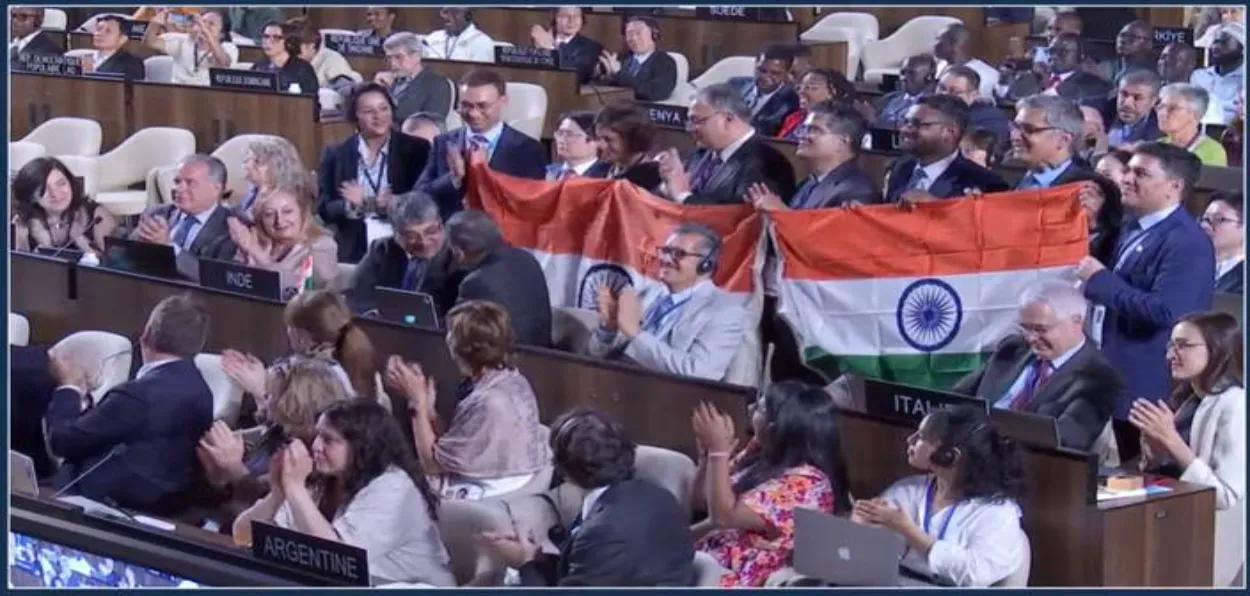
Pune
In a remarkable decision taken at the 47th Session of the World Heritage Committee, India’s official nomination for 2024-25 cycle, ‘Maratha Military Landscapes of India’ got inscribed on the UNESCO World Heritage List, becoming India’s 44th property to receive this recognition.
This global accolade which lists 12 forts built by Maratha warrior Chattrapati Shivaji Maharaj celebrates India’s enduring cultural legacy, showcasing its diverse traditions of architectural brilliance, regional identity, and historical continuity.
These forts played a key role in freeing the Maratha people and their spirit from the shackles of foreign invaders. The Indian government nominated these forts under the title "Maratha Military Landscapes of India," highlighting their connection to Shivaji Maharaj and the Maratha Empire.
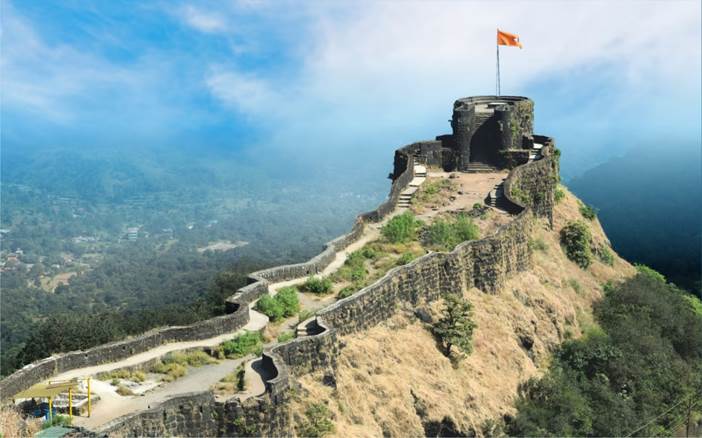
Pratapgarh Fort
In Paris, the Indian delegation presented the historical and cultural significance of these forts to UNESCO’s committee. The committee recognized them as having "outstanding universal value." The forts’ strategic importance, their unique architectural style that utilized the Sahyadri mountains, and Shivaji’s guerrilla warfare tactics were decisive in securing this honour.
What is UNESCO’s World Heritage List?
A country’s heritage reflects its cultural identity. The United Nations Educational, Scientific and Cultural Organization (UNESCO) works to preserve, promote, and protect such historical treasures. Every year, April 18 is celebrated as World Heritage Day. UNESCO guides the conservation of these sites and provides financial assistance when needed.
Sites are chosen for their historical and cultural importance. Two organizations, the International Council on Monuments and Sites and the World Conservation Union, thoroughly evaluate them. After review, they recommend sites to the World Heritage Committee. This committee meets annually to decide on the inclusion of fresh sites to the list. The list can include historic buildings, cities, deserts, forests, islands, lakes, monuments, mountains, and more.
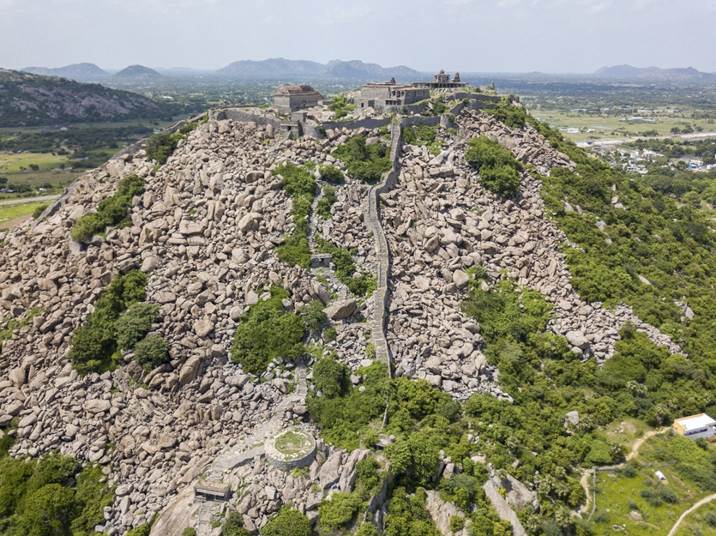
Gingee Fort
What is UNESCO’s Purpose?
The main goal of adding a site to the World Heritage List is to ensure its survival. This prevents it from being lost to neglect or carelessness. Once UNESCO designates a site as a World Heritage Site, its preservation becomes a global responsibility. These sites are not just important to one country but to all of humanity.
Which Forts nade it to the UNESCO List?
The Indian government recommended twelve forts of the Maratha Empire for UNESCO’s list. Eleven of these are in Maharashtra: Salher, Shivneri, Lohgad, Khanderi, Raigad, Rajgad, Pratapgad, Suvarnadurg, Panhala, Vijaydurg, and Sindhudurg. The twelfth fort, Jinji, is in Tamil Nadu. These forts, located in strategic spots, played a vital role in the Maratha Empire’s history. They served as administrative centers and kept enemies at bay. Chhatrapati Shivaji Maharaj, celebrated worldwide as a visionary leader, skillfully used these forts to build and protect his Swarajya (self-rule). Their influence lasted even into the British era.
The forts’ design, fortifications, and military systems were presented to UNESCO. Supporting documents were also submitted. Taking note of this, UNESCO approved their inclusion in the World Heritage List. This recognition will spread their fame globally and aid in their preservation. It will also boost tourism in the region.
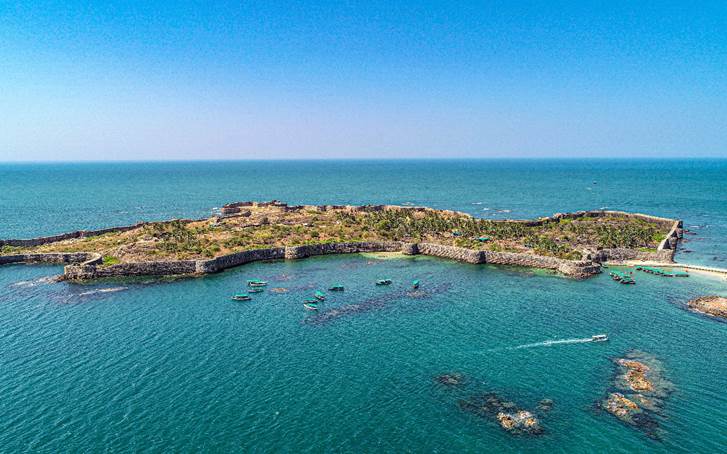
Sindugarh Fort
This historic achievement was a team effort by several government bodies. The Archaeological Survey of India and the Ministry of Culture selected five proposals for 2024-25, and the Prime Minister’s Office chose the "Maratha Military Landscapes" for UNESCO submission.
Prime Minister Narendra Modi’s Reaction
Expressing pride in this honor, Prime Minister Narendra Modi said, “Every Indian is thrilled with this recognition. The ‘Maratha Military Landscapes’ include twelve magnificent forts, eleven in Maharashtra and one in Tamil Nadu. When we speak of the glorious Maratha Empire, we connect it to good governance, military strength, cultural pride, and social welfare. These great rulers inspire us with their resolve to never bow to injustice. I urge everyone to visit these forts and learn about the rich history of the Maratha Empire.”
The poetic line, “The touch of your feet ignites the earth,” captures the pride, respect, gratitude, and love for Shivaji Maharaj. His forts continue to inspire people today. Many Shivaji enthusiasts feel that including these forts in the list has not only honored them but has also elevated the prestige of UNESCO’s World Heritage List.
Support from All Member Countries
Maharashtra’s Chief Minister Devendra Fadnavis expressed joy at the global recognition of Shivaji Maharaj’s forts. He called it a moment of pride for all. He noted that many contributed to the UNESCO follow-up. The application was supported by votes from representatives of twenty countries, all of whom backed India’s proposal, Fadnavis shared.
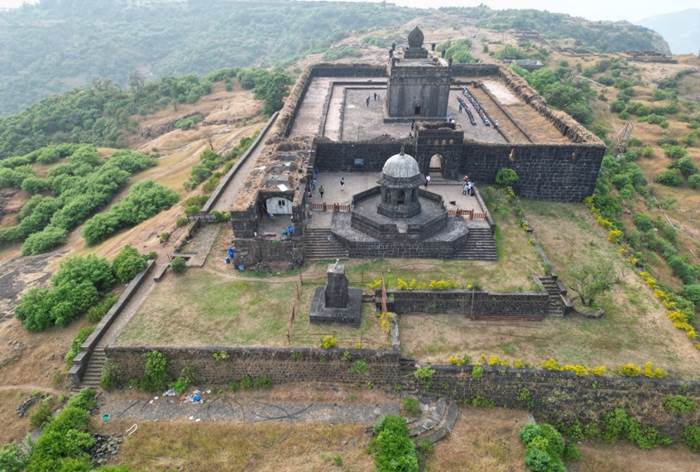
Raigarh Fort
Chief Minister Devendra Fadnavis said, “To build and sustain Swarajya, Chhatrapati Shivaji Maharaj created a network of forts. Hidden doors and the unique ‘machi’ architecture are key features of Maratha fort design. This ‘machi’ system, built for defense and warfare, is unique in the world. It represents the strategic brilliance of these forts. This is their ‘outstanding universal value.’ Today is a joyful moment for Shivaji devotees across the country. I congratulate all of Maharashtra.”
He added, “Prime Minister Narendra Modi’s support and the central government’s active involvement were crucial. The Archaeological Survey of India and the Ministry of Culture provided significant help. Deputy Chief Ministers Eknath Shinde and Ajit Pawar supported us throughout, while Cultural Affairs Minister Ashish Shelar personally met UNESCO’s Director-General and presented a technical proposal.”
ALSO READ: Dr. Sabiha Inamdar used taboos to change lives and attitudes
The contributions of architect Dr. Shikha Jain and archaeology director Dr. Tejas Garge were invaluable. Sites included in UNESCO’s World Heritage List gain not only global recognition but also opportunities for international cooperation in their preservation. While UNESCO does not provide direct funding, it helps in the maintenance of sites through the World Heritage Fund.
